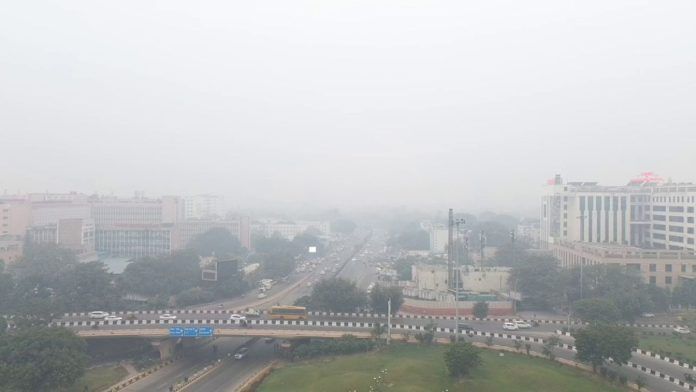New Delhi: Delhi’s winter climate is not suited for cloud seeding as an effective air pollution solution, said a new IIT Delhi study published on 31 October. Titled ‘Can Cloud Seeding Help Tackle Delhi’s Air Pollution?’ the study released days after the Delhi government along with IIT Kanpur conducted three trials in northwest Delhi to induce artificial rainfall through cloud seeding, with no discernible results.
“Delhi’s winter atmosphere is climatologically unsuitable for consistent and effective cloud seeding,” said the study. “There is a fundamental lack of sufficient moisture and saturation during the peak pollution months when the intervention is most needed.”
Written by a group of researchers from IIT Delhi’s Centre for Atmospheric Sciences, the study uses climatological data from 2011-2021 for its analysis. However, since it was written as part of a Hackathon in early October 2025, the study has not yet been peer reviewed.
Using parameters such as temperature, water vapour levels, humidity, and rainfall in Delhi during the winter months of October to February, the study shows how existing winter conditions make it difficult to conduct cloud seeding, forget assessing its actual impact on pollution levels. While Delhi has had ‘Poor’ air quality for over two weeks now, the cloud cover is minimal, because of which, the Delhi government said, the seeding trials failed this week.
According to IIT Delhi, this is a season-wide phenomenon, and they have data from ten years to prove it. By using data and the underlying conditions needed, the researchers were able to calculate how many days were viable for cloud seeding during winters in Delhi—only 92 days in 10 years.
“The success of any seeding operation is fundamentally constrained by pre-existing atmospheric conditions,” read the study. “For seeding to be viable, a window of opportunity must exist.”
This window of opportunity is characterised by a basic level of humidity, water vapour and cloud cover in the sky. Therefore, cloud seeding is only possible when there are clouds and there is a chance of rainfall.
Most of the rainfall in Delhi occurs due to the Western Disturbances, which are rare and erratic during winters. While there is definitely some rainfall during winters in Northwest India, it only accounts for about 15% of the city’s total rainfall. In 10 years from 2011 to 2021, the study found that only 137 rainfall events during the winter months, out of which 112 were because of the western disturbances.
Also, given the climate change, studies have shown that the western disturbances, that bring clouds to Delhi in winters, have become infrequent.
As for water vapour, the study analysed the Total Column Water Vapour in the air during winter months and found that as the season progressed from October to January, the weather got drier and more unsuitable for cloud seeding. Apart from water vapour, another major requirement for cloud seeding is temperature, which determines what kind of cloud seeding is viable.
The study said that in October to November the cloud temperatures go down to a minimum of 0°C so only hygroscopic seeding is possible—when the ‘seed mixture’ is added from below the base of the clouds and warm winds or temperatures help bring about rainfall. Cloud seeding is a process in which a mixture of silver iodide, or other substances like calcium chloride, are sprayed or dispersed into rain-bearing clouds to induce rainfall. Depending on the kind of cloud seeding being done, the seed mixture added also changes.
The study found that in December and January, the cloud temperatures are below freezing point, so only glaciogenic seeding is possible. In Glaciogenic seeding, cold water clouds are seeded, usually to enhance snowfall or hail, or cold rainfall in mountainous areas.
These basic conditions, the study showed, are difficult to find during winters in Delhi. Without adequate cloud cover and atmospheric conditions, the possibility of cloud seeding is much lowered in the city’s winter atmosphere. Additionally, even if cloud seeding is conducted in Delhi to reduce air pollution, it’s impact on the overall air quality is short-lived, said the study.
The authors studied pollutant levels near AQI monitoring stations before and after rainfall events and found that while heavy rain definitely reduced PM2.5 levels considerably in most places, the levels bounced back within 1-5 days.
“Cloud seeding cannot be recommended as a primary or reliable strategy for Delhi’s winter air pollution management” said the study in conclusion. “It should be viewed, at best, as a potential high-cost, emergency short-term measure.
(Edited by Viny Mishra)
Also read: 0.1 mm of rain in Noida & AQI down by 20 points—how Delhi’s cloud seeding trial went






